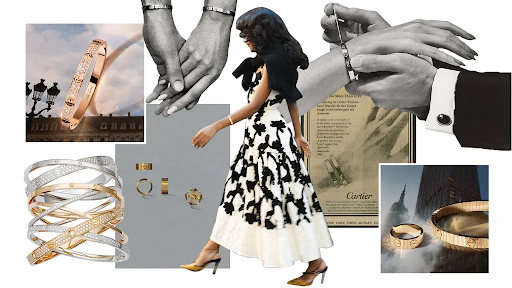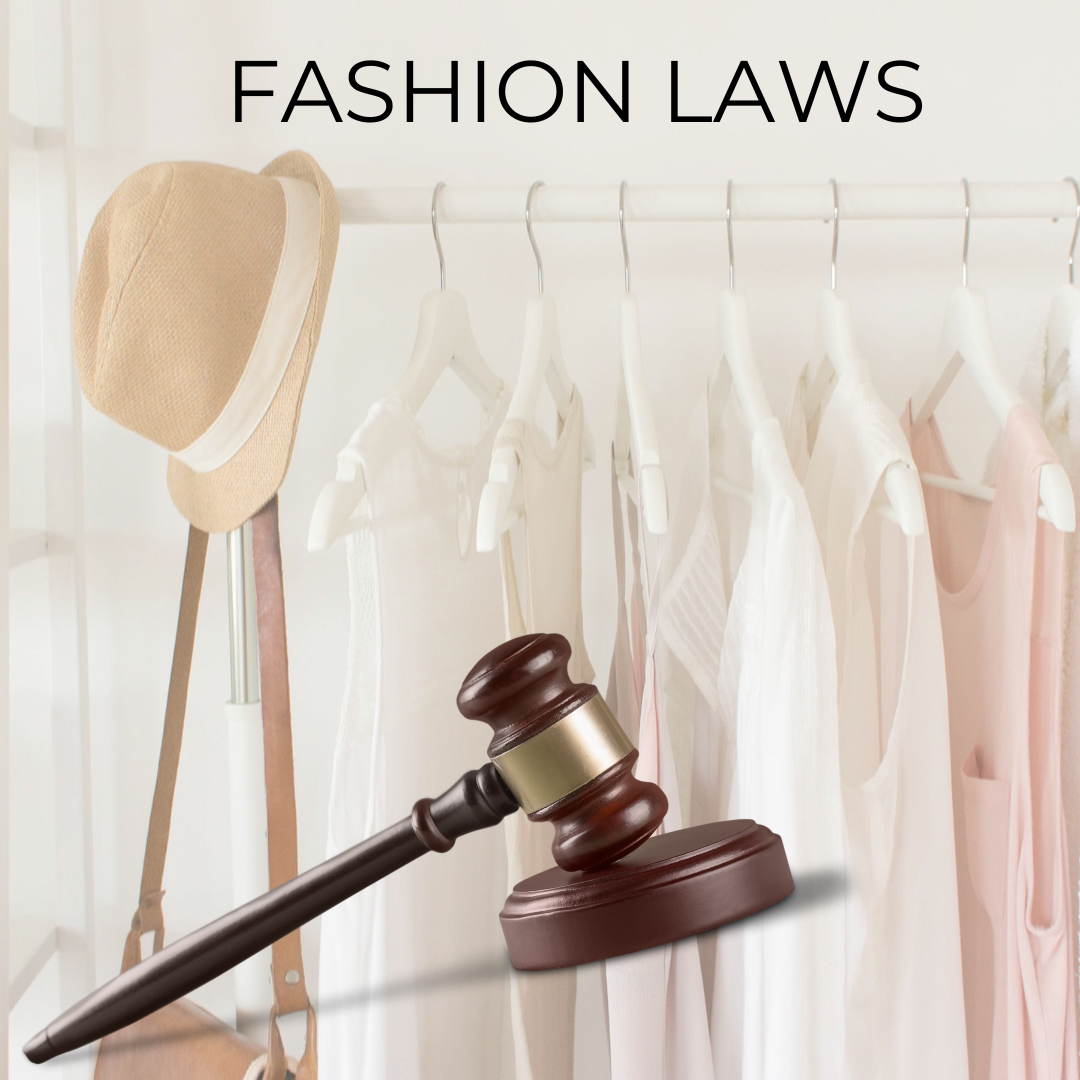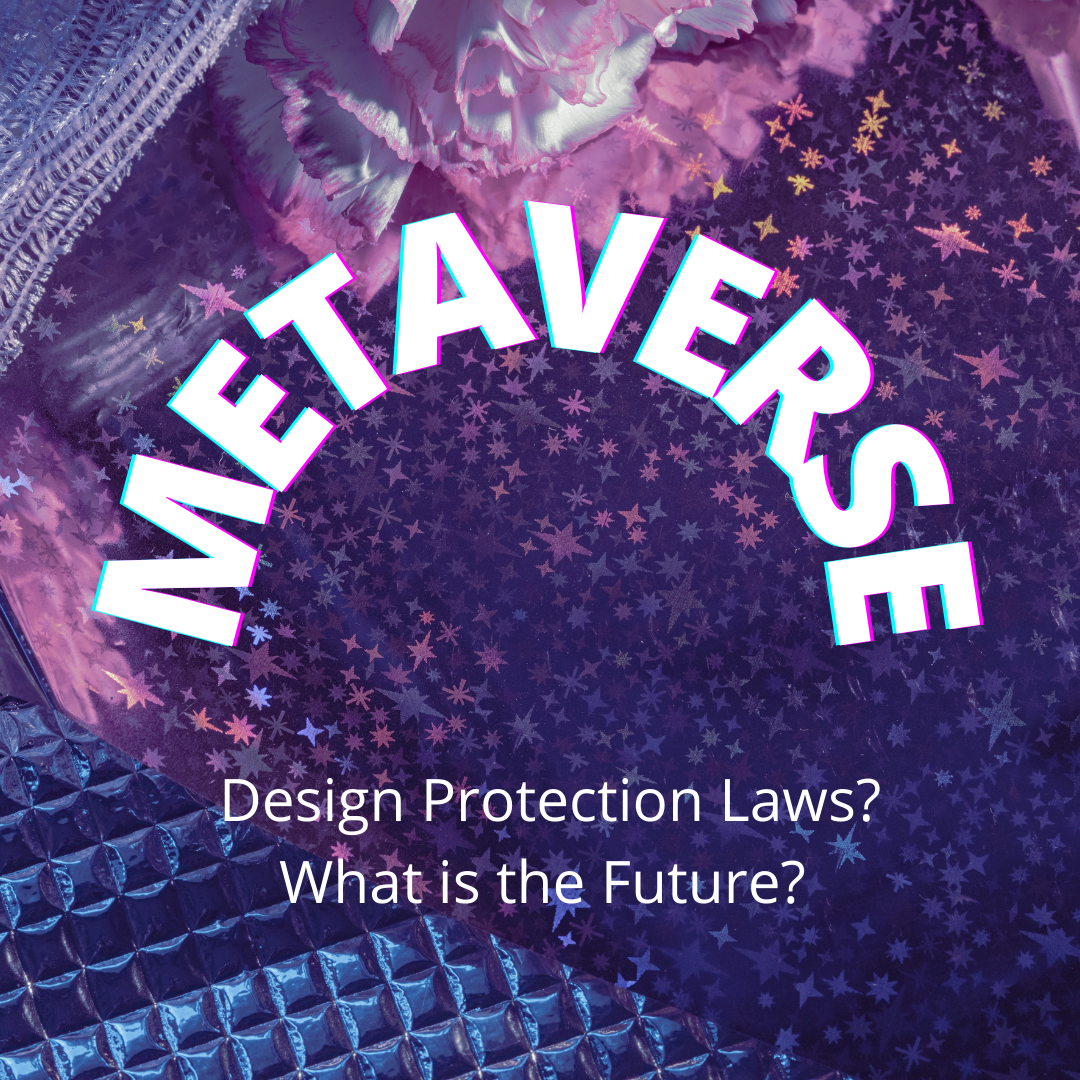When we come to terms with any of the billion- or trillion-dollar industries that have been growing tremendously over the years, we do come across the essential need of backing it up legally. The fashion industry is that trillion-dollar, versatile industry that legally needs to be protected tactfully to ensure its harmonious existence. The fashion industry gained recognition quite recently hence, the laws governing it yet need to stem out in the country.
Fashion law or Apparel law as it may be called is one of the emerging areas in the legal field. Fashion has an array of situations where their Intellectual Property Rights can be misused. The basis of fashion is exclusivity and creativity which if not protected could lead to an unethical approach in the industry. Counterfeiting designs of fashion brands at a local level is one of the most wanted issues that needs to be curbed. Fashion is not only about creating a brand name and selling the products but to sell those products you need a model a lot of times and protecting the model’s rights is another aspect that needs to be considered too. The rampant prevalence of knock-offs in the industry tells us that there is no one-step solution or protection to all answers in the industry.
It is rightly agreed that the copyright protects the creative tangent of a design however it does not help in attaining monopoly over the product. It is a deterrent factor for the majority of the designers who live on economies of scale as the protection of design expires too once reproduced 50 times.
Let me talk you into a famous case of “Ritika Apparel Vs Biba” where the plaintiff alleged the defendant of copying, reproducing, and further selling the design under their name “Biba”. The refuge of section 15 (2) of the Copy Right Act 1957 was taken by the defendant claiming that the plaintiff had produced over 50 number of the product and had lost all rights to copyright infringement.
We have another eye-opening case that happened lately in the high Fashion Brand called “Christian Dior” that was accused of copying designs from a young start-up named “People tree”. People Tree after a lot of strategizing and efforts had collaborated with a group of artisans from Rajasthan to work on a design of block prints that would ultimately be projected on their clothes that were going to be manufactured in the market. Unfortunately, over time we had Christian Dior copy the design which was later even seen enrobed by actresses on cover pages of famous magazines. This Intellectual Property Case left no stone upturned under the legal blanket; however, the case was won by People Tree and they could retain their artistic work under the Copyright Act, 1957.
The scope of fashion law does not only extend to Intellectual Property Rights but even goes on to look into labour and real estate law. Over the years we have had various people fall prey to the cruel face of the industry and exploitation in many ways. Face criticism and misdemeanour, budding designers being a victim of trafficking in the name of guidance and role models is just a gist of what the industry offers at times, however, if given an insight a lot of dark truths could be revealed.
It takes an army of craftsmen to create a piece for the customer and it takes a heart to speak about the exploitation they face. These aren’t just hiccups in the industry but issues that need utmost importance as the rate of exploitation has been rampant over the years. Statistically speaking 31.9% of the total employment in the garment industry is women along with an irrational rate of child labour. The rate of child labour is high in the industry because of activities that are potentially more suited to children than adults. Multiple cotton garment manufacturers have their very own supply chain of manufacturing for which plucking cotton buds is an intricate task. For tasks like these, they have children employed to avoid damage as children have small fingers to pluck the cotton buds. Due to the poor lifestyle of workers, women face a lot of oppression, and several times their salary does not even round up to half of what a daily wage salary would look like.
A very famous article by “The Guardian” had a report disclosing the dark truths of South India. The manufactures lured young girls of backward class families to the spinning mills with promises worthy of nutritious food, open schooling, and a stable paying job. These were nothing but baits to invite slavery and the worst form of labour exploitation.
Yet we have some brands like Adidas, H&M, GAP that have been embroiled under allegations of forceful labour, where Muslim minorities were tortured.
Another issue that has been going on for decades now is “cultural appropriation” because it so happens a lot of times that designers do not know the line between paying respect and exploiting one’s culture. Fashion uses non-dominant culture is manners where neither do they give enough respect to the original meaning nor do they give due credit to the source. We have seen Gucci sell turbans for $800 to Kim Kardashian’s so-called “exotic fashion choices” that have been highly questionable in recent times.
There have been multiple luxurious brands that adopt minorities’ cultural resurfaces for their fashion week. When Gucci was selling the turban as a whole new accessory on its website, it frustrated many Sikhs as they protested saying that the turban was a symbol of faith for those who practice the religion and not a new hot accessory that can be put up on sale.
In 2016 we had the famous Road Ahead show where the designer had drawn inspiration from the traditional Chinese prints and created flowy capes, halter necks, jewellery, oversized jackets. This aggrieved the Chinese and their anger was all over social media as using their traditional prints for designs on lingerie was not cool. Besides that, a fully feathered dragon that represents good luck, strength, and wealth in Chinese culture was wrapped around Elsa Hosk’s torso.
Due to the industrial revolution, the Swadeshi movement was launched by our national leaders who were nothing but the pillars of the movement. It was a revolt of our nation against the British where handmade woven “khadi” was highlighted and hence is still associated within India.
The list goes on and with the uproar of these countless allegations, it’s of utmost importance for the fashion industry to undergo profound transformations. Not to deny that it is the diversity of culture which allows fashion to evolve, however not at the cost of misrepresentation and disrespect to the society’s sentiments. It is the need of the hour to have solid laws that help us protect cultural appropriation in the industry as Intellectual Property laws have excluded it from their purview regarding them as public domain.
The apparel Industry sadly is considered to be the most polluting industry in the world and according to certain estimates, it contributes to about 8% of the greenhouse emissions. Even though we seem to have organizations like the Organisation for Economic Cooperation and Development, The Sustainable Apparel Coalition that aim at measuring the social and environmental impact, yet some brands remain with no legal repercussions if they fail to comply with the relevant guidelines.
Fashion is an indispensable industry and has numerous aspects to it. Every individual knowingly and unknowingly gets involved in fashion and is a part of it. However, fashion is not just about clothes and it has much more to that. One of the most essential things under fashion is “Fashion Merchandising”.
Merchandising means strategic planning, buying and selling of goods at the right time, right area, the right amount, and the right price which helps us in maximizing profits. It is a tool that changes an idea of fashion into an actual piece of clothing. It is done in favour of the customer’s demands. There are three categories of Fashion merchandising, namely, visual, retail and export. We have various government schemes as well that help in safeguarding the community as a whole. In addition to this, the government faces a lack of transparency when they look at their corporate structure as well. The information which is publicly available about employment relations which has the interference of human resources it is negligible. Minute details about their workforce size, recruitment, and accommodation of the workers are not easily accessible. Likewise, a lot of information on wages is not available too which brings in an ambiguous fog in the running of the industry.
The whole fashion fraternity faces challenges like endorsement disclosure and immigration as well. We live in an era where bloggers influence fashion on the minds of people and are the ones who aspire to be a voice for the fashion industry. Fashion blogging is not just confined to being a hobby anymore but has become a lucrative job hence it is very important to combine old traditional ways like word of mouth with influencers. The main step here however is that the relation of the influencer with the brand and understanding the disclosure is very important. With the industry becoming more and more globalized some companies need to scout for international clients. According to the reports of Pew Research Centre, the textile and apparel industry employ around 36% of immigrants, however, employing them also includes securing their visas.
In 2019, there was a report by UK’s Environmental Audit Committee that made several sustainable recommendations to the government. However, the question that arises is that without legal changes how much of this is impact worthy?
After the number of efforts put in by several people to even enrobe one individual, we still have a prevailing issue of sustainability. The textile industry which is known to be doing wonders is not proving to be a boon for the environment. It is ranked as one of the highest polluting industries. It Is indeed very essential for every brand socially responsible and abide by the government policies or maintain strong sustainable grounds.
With Fashion even taking over online platforms in a fruitful manner is going to come with its set of perks and flaws not just for the labels and brands but for the retailers, manufacturers, and the community at large. The transition from fast fashion to digital fashion is going to be painful and amidst the pandemic, it has already begun. No doubt by streamlining certain parts of fashion it will blossom but it is going to create minute hurdles across the way which are going to be inevitable. With this new beginning, the need for legal baking is going to get more intense and there will be multiple triggering factors that will be targeting the industry to be even more sustainable as well as transparent.
In conclusion of the article, it is not denied that the fashion industry is and that industry has bloomed tremendously over years and changed the dynamics of the nation’s economy. Keeping in mind the wide ambit of the industry and the multiple challenges it has been facing for years now it is essential to work rigorously to uphold the legal system and flourish legislation that governs all aspects of the industry under one umbrella. Binding the Fashion world challenges into one is the ultimate goal.
Footnotes:
- Saloni Thapa, (2020, September 2) Decoding Fashion Industry: Need for Fashion law
https://legal-wires.com/columns/decoding-fashion-industry-need-for-fashion-law/
- Brigitte Vezina (2019, August) Curbing Cultural Appropriation in Fashion Industry with Intellectual Property, WIPO MAGAZINE
https://www.wipo.int/wipo_magazine/en/2019/04/article_0002.html
- Manon Huckle, (2021, March 31) When it comes to Cleaning up its Act, Fast Fashion is No Fast Fix.
https://www.thefashionlaw.com/when-it-comes-to-cleaning-up-its-act-fast-fashion-is-no-fast-fix/
- Rachit Garg, (2021, May 18) Indispensable Need for Definite Laws in Fashion Merchandizing Industry
https://blog.ipleaders.in/indispensable-need-definite-laws-fashion-merchandising-industry


















